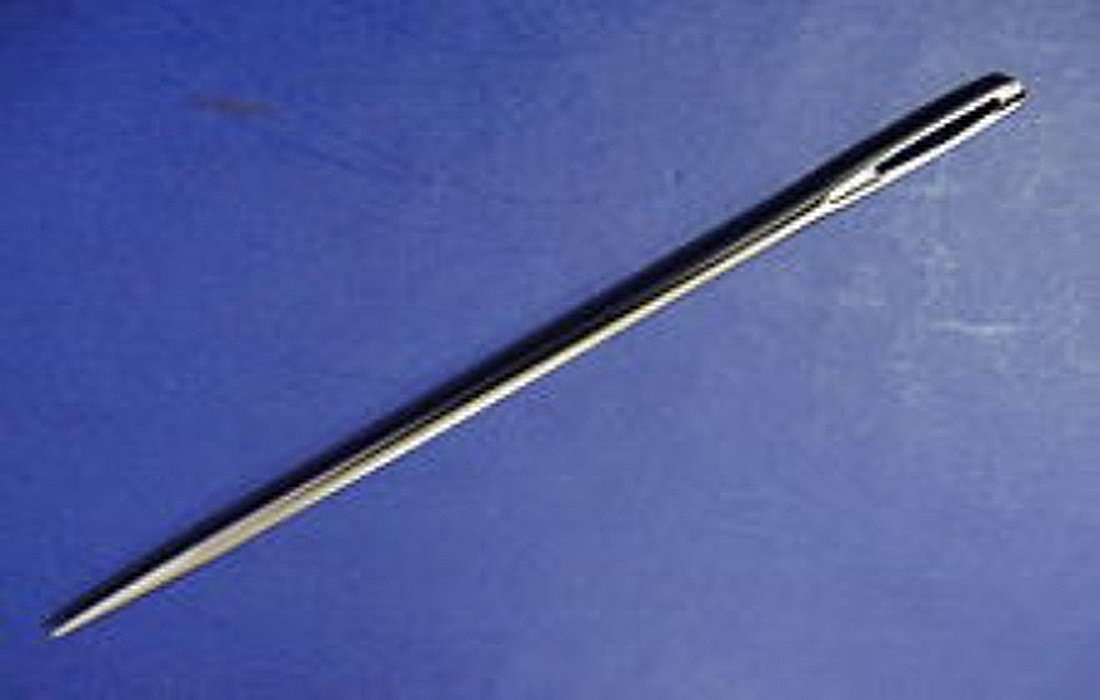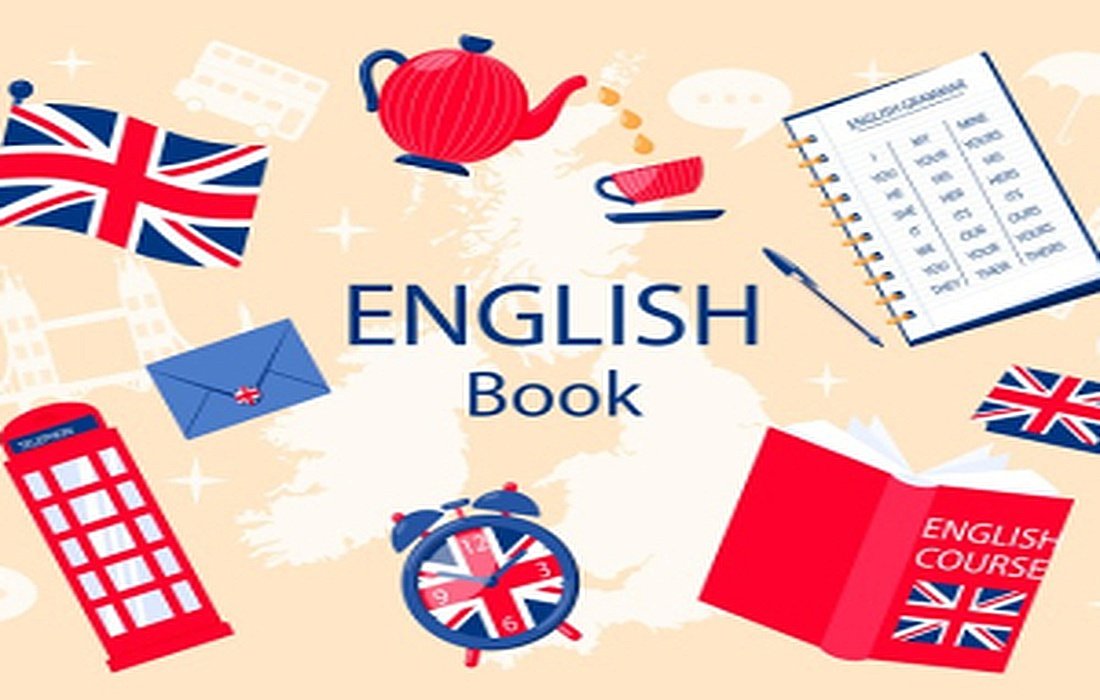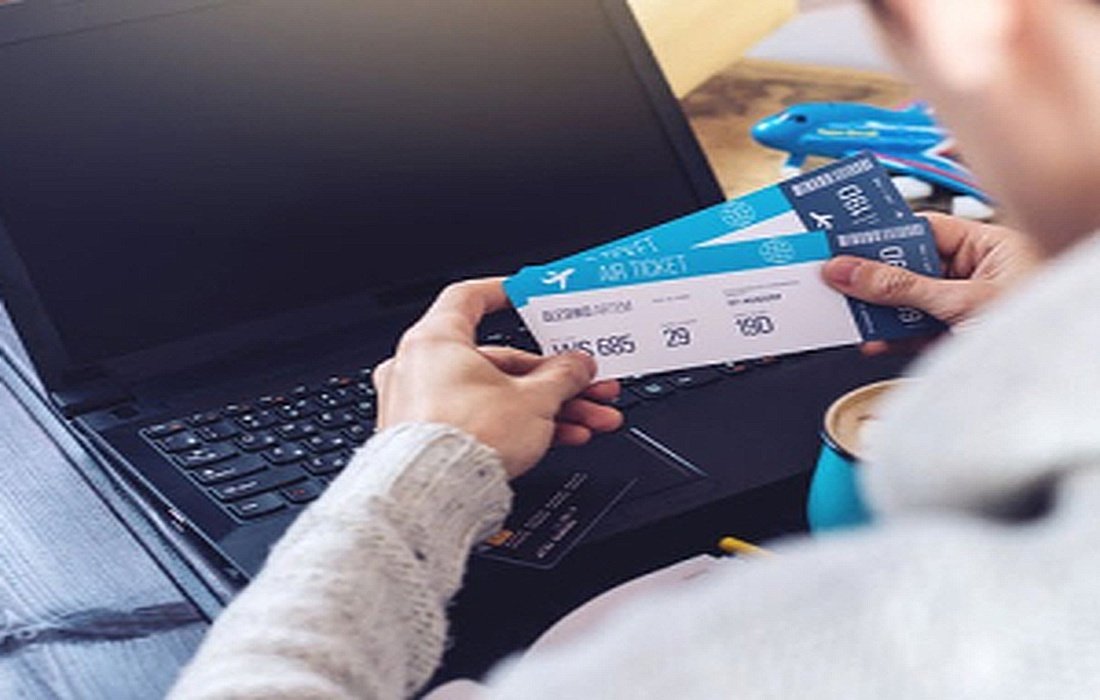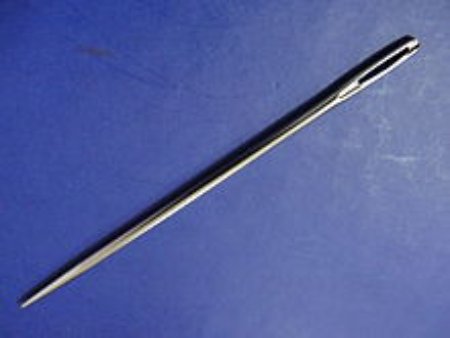
Sewing Needles
Complete Guide to Types of Sewing Needles: Choosing the Best Tool for Every Project
A sewing needle is a thin, elongated tool with a sharp point at one end and a small hole called the “eye” at the other end through which the thread passes. These needles are used for hand sewing. The first needles were made from natural materials like bone or wood. However, modern needles are made from high-carbon wire that is plated with nickel or 18-carat gold to resist corrosion. Quality needles used for embroidery are coated with a mix of two-thirds platinum and one-third titanium alloy for added durability and efficiency.
In the past, needles were typically stored in special needle books or boxes, which sometimes became decorative items. Additionally, sewing needles can be kept in a small box called an “étui,” which is also suitable for storing small tools like scissors, pencils, and tweezers.
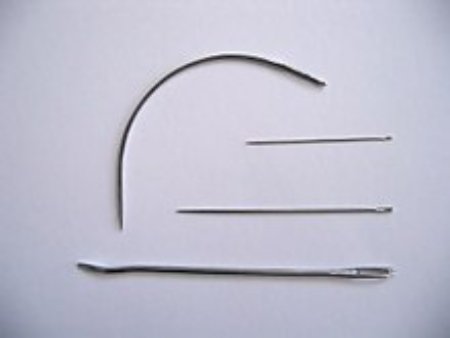
Types of Hand Sewing Needles
Types of Hand Sewing Needles
Needles used for hand sewing come in various designs/classes based on their intended use. Each type also comes in different sizes.
.
Sharp Needles:Used for general hand sewing; they are designed with a sharp point and a round eye, and they have a medium length. Needles with two eyes can carry two strands of thread while minimizing fabric friction.
Appliqué:These are considered another versatile needle type for sewing, appliqué, and patchwork.
Embroidery:Also known as crewel needles; they are similar to sharp needles but have a longer eye to facilitate threading multiple strands of embroidery thread and thicker threads.
Between or Basting Needles: These needles are shorter than sharp needles, with a small round eye, and are used for making fine stitches on heavy fabrics, such as for basting and other precise handwork. Note that some manufacturers differentiate between basting needles and between needles, with the latter being slightly shorter and thinner than the former.
Milliners:A class of needles that are generally longer than sharp needles, useful for gathering and pleating, typically used in milliner work.
Easy or Self-Threading Needles: Also known as calyx-eye needles, side-threading needles, and spring-eye needles, these needles have an open slot that allows a thread to easily pass through, instead of the usual closed eye design.
Beading Needles:These needles are very fine, featuring a narrow eye to pass through the center of beads and sequins, along with a long shaft to thread and hold several beads at once.
Ballpoint Needles: Also known as round-tip needles, these are long and thick needles with a rounded end and a large elongated eye. They can be flat or round and are generally used for threading elastic, ribbon, or tape through casings and mesh openings.
Chenille:These are similar to rug needles but have large, long eyes and a very sharp point for penetrating closely woven fabrics. They are useful for ribbon embroidery.
Darning:Sometimes called finishing needles, these have a blunt point and a large eye designed to make them similar to but longer than rug needles.
Threading needles are also the heaviest subtype.
Doll: These needles are not designed for hand sewing; they are long and thin and are used for soft sculpting on dolls, especially facial details.
Leather: Also known as glove needles and wedge needles, these have a triangular point designed to puncture leather without tearing it; they are often used on leather-like materials such as vinyl and plastic.
Boat Makers’ Needles:Similar to leather needles, but the triangular point extends to the top of the shaft; designed for sewing heavy canvas or leather.
Rug Making:The large eye on these needles allows them to carry heavier thread than other needles, and their blunt tips—usually bent at a slight angle—allow them to pass through loosely woven fabrics like embroidery canvas or uniformly woven materials without snagging or tearing; a double-eyed version is offered for use on a mounted frame and supplies two colors of thread.
Tatting: These are made with a uniform thickness for their entire length, including at the eye, allowing thread to be pulled through double stitches used in tatting.
Upholstery:These needles are heavy, long, and may be straight or curved, used for sewing heavy fabrics, upholstery work, tufting, and quilting; the curved type is practical for difficult positions on upholstery where a straight needle won’t work. Long 12-inch (30 cm) needles are used for mattress repairs. Sizes range from straight: 3″-12″ long, curved: 1.5″-6″ long.
Beading Needles: These needles are very fine, featuring a narrow eye to pass through the center of beads and sequins, along with a long shaft to thread and hold several beads at once.
Ballpoint Needles:Also known as round-tip needles, these are long and thick needles with a rounded end and a large elongated eye. They can be flat or round and are generally used for threading elastic, ribbon, or tape through casings and mesh openings.
Chenille:These are similar to rug needles but have large, long eyes and a very sharp point for penetrating closely woven fabrics. They are useful for ribbon embroidery.
Darning:Sometimes called finishing needles, these have a blunt point and a large eye designed to make them similar to but longer than rug needles. Threading needles are also the heaviest subtype.
Doll:These needles are not designed for hand sewing; they are long and thin and are used for soft sculpting on dolls, especially facial details.
Leather: Also known as glove needles and wedge needles, these have a triangular point designed to puncture leather without tearing it; they are often used on leather-like materials such as vinyl and plastic.
Boat Makers’ Needles:Similar to leather needles, but the triangular point extends to the top of the shaft; designed for sewing heavy canvas or leather.
Rug Making:The large eye on these needles allows them to carry heavier thread than other needles, and their blunt tips—usually bent at a slight angle—allow them to pass through loosely woven fabrics like embroidery canvas or uniformly woven materials without snagging or tearing; a double-eyed version is offered for use on a mounted frame and supplies two colors of thread.
Tatting: These are made with a uniform thickness for their entire length, including at the eye, allowing thread to be pulled through double stitches used in tatting.
Upholstery:These needles are heavy, long, and may be straight or curved, used for sewing heavy fabrics, upholstery work, tufting, and quilting; the curved type is practical for difficult positions on upholstery where a straight needle won’t work. Long 12-inch (30 cm) needles are used for mattress repairs. Sizes range from straight: 3″-12″ long, curved: 1.5″-6″ long.
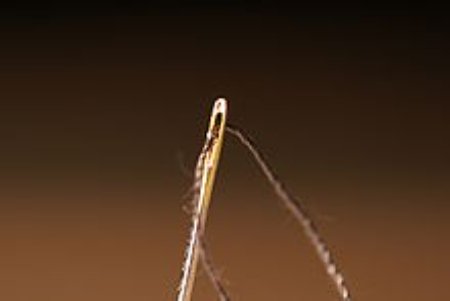
Buying Guide for Sewing Needles
Parts of a Sewing Needle
A sewing needle has 6 parts. The main part is called the shaft. The shaft is the part that connects to a sewing machine or the part held for hand sewing. The next part is the groove. The groove is a recess along the shaft that allows the thread to run beside the needle while passing through fabric. The eye is the next part of the needle. This is a hole close to the needle’s point through which the thread passes. The scarf is the next part of a sewing needle; it allows the hook to catch to form a stitch. The last part of a sewing needle is the point, which is the tip of the needle that pierces the fabric.
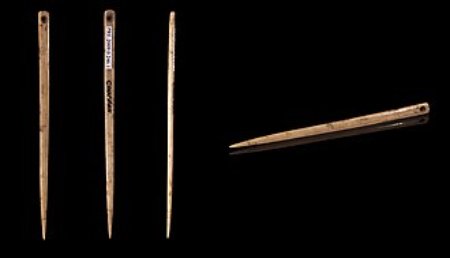
Needles Suitable for Sewing
Needle Size
Needle size is indicated by one or more numbers on the manufacturer’s packaging. The general convention for needle size, similar to wire needle sizes, is that within any given needle class, the length and thickness of a needle increase with a decrease in the size number. For example, a size 9 needle will be thicker and longer than a size 12 needle.
However, needle sizes are not standardized, so a size 10 from one class may be thinner or finer than a size 12 from another type. Where a package contains a needle count following two size numbers like “20 sharp 5/10”, the second set of numbers refers to the size range of needles in the package, in this case usually ten size 5 sharp needles and ten size 10 needles (for a total of 20). As another example, a package labeled “16 Milliners 3/9” would contain 16 milliner needles in the range of sizes 3 to 9.
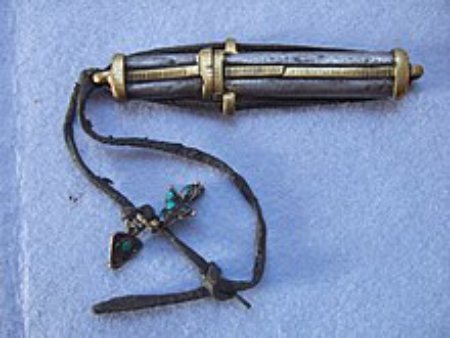
Features of Sewing Needles
History of Prehistoric Sewing Needles
Sites that have discovered bone needles with eyes dating from 45,000 to 25,000 years ago.
Madalenin, Gourdon-Polignac, France – Toulouse Museum: The first form of sewing was probably fastening animal skins together using pieces of bone as needles, with animal sinew or plant materials as thread. The main limitation was the ability to create a hole small enough in a needle matrix, like a bone splinter, to not damage the material. A remnant of this can be seen in the use of needles to create eyelet holes in fabric by pulling rather than cutting the threads. A point that may be a bone needle dates back 61,000 years and was discovered in the Sibudu Cave, South Africa.
A needle made from bird bone attributed to ancient humans, the Denisovans, is estimated to be around 50,000 years old and was found in Denisova Cave. A bone needle dating to the Aurignacian period (47,000 to 41,000 years ago) was found in Potočka zijalka Cave in Eastern Slovenia. Bone and ivory needles found at the prehistoric Xiaogushan site in Liaoning date from 30,000 to 23,000 years ago.
Ivory needles have also been found dating back 30,000 years at the Kestenki site in Russia. Bone needles from the Neolithic age, 8,600 years old, were found at Çatalhöyük in western Anatolia, in present-day Denizli Province. Flinders Petrie found copper sewing needles in Naqada, Egypt, dating from 4,400 BC to 3,000 BC. Iron sewing needles were found in Apidom Manching dating back to the 3rd century BC.
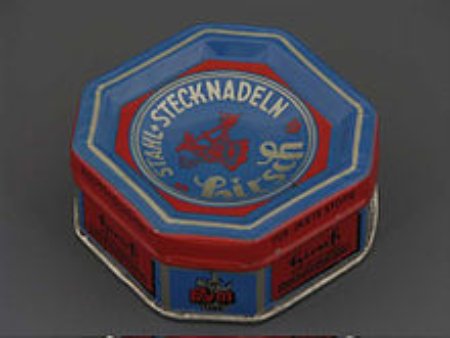
History of Sewing Needles
Ancient Sewing Needles
The Tibetan needle box appears to be a form of needle lace known as nålebinding, existing thousands of years before knitting and crochet, partly because it could utilize much shorter and more graded threads than knitting. Native Americans often used sewing needles made from natural resources. One such resource, the agave plant, provided both needles and “thread.” The agave leaves were soaked for a long time, leaving a paste, long fibers, and a pointed tip that connected the ends of the fibers.
The “needle” is essentially what the pointed end of the leaf was. After the fibers dried, the fibers and “needle” could be used to sew items together. Sewing needles represent an application of wire manufacturing technology that began appearing in the 2nd millennium BC. Some beautiful examples of Bronze Age gold were made from very uniform gold wire, which is more malleable than bronze. However, copper and bronze needles do not require such long history: the eye can be formed by bending the wire back on itself and pulling it through the mold.
Frequently Asked Questions about Types of Sewing Needles
1. What are sharp sewing needles used for?
Sharp needles are used for general hand sewing. These needles have a sharp point and a round eye, making them suitable for simple and everyday stitches.
2. What specific characteristics do embroidery needles have?
Embroidery needles, also known as crewel needles, have larger eyes than regular needles, which makes threading multiple strands of embroidery easier.
3. What kind of stitching are appliqué needles used for?
Appliqué needles are used for delicate and specialized stitching, like patchwork and decorative works, making them versatile.
4. What is the difference between between needles and sharp needles?
Between needles are shorter than sharp needles and are used for precise, fine stitching like sewing on heavy fabrics and professional sewing tasks.
5. What features do leather sewing needles have?
Leather sewing needles have a triangular tip designed for piercing leather and similar materials without tearing the fabric.
Conclusion
Choosing the right sewing needle based on the type of work and fabric is one of the vital factors in achieving desired results in sewing. Various types of needles, each with specific features and applications, are designed for precise stitching, embroidery, leatherworking, and other crafts. By gaining a clearer understanding of each type of needle, you can make the best choice for your projects and improve the quality of your work.
Compilation:SelMagz Home Secrets Section



